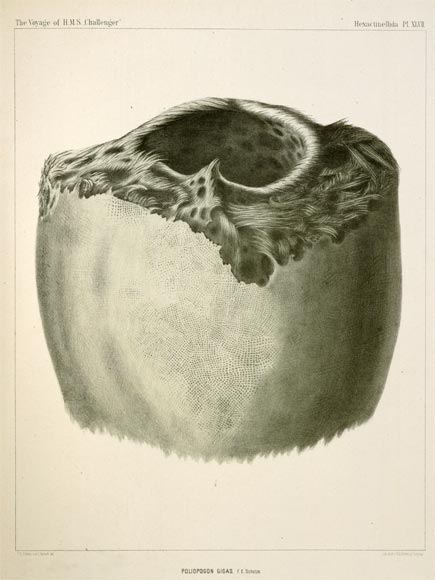
This drawing is of a huge Hexactinellida or glass sponge, Poliopogon gigas, which was trawled from a depth of 1,150 metres near the Kermadec Islands during the Challenger voyage. It was 70 centimetres across at its widest, and had a lattice outer layer. The centre was a 20-centimetre cavity known as a paragaster, where water collects after passing through small canals to filter out food. In the specimen depicted here the osculum or top opening was damaged.
Te whakamahi i tēnei tūemi
Museum of New Zealand Te Papa Tongarewa
Reference:
F. E. Schulze, Report on the Hexactinellida. Scientific results of H.M.S. Challenger expedition, zoology vol. 21, 1887, plate 47
Permission of the Museum of New Zealand Te Papa Tongarewa must be obtained before any re-use of this image.









Tāpiritia te tākupu hou